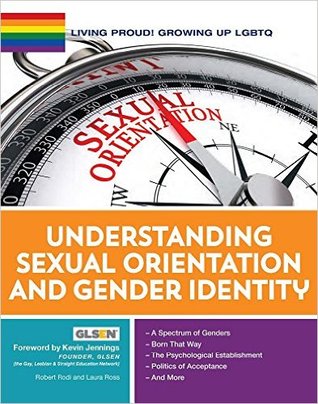A very kind commenter recently pointed out to me that in using that word “homophobic” in my post about eliminating ableist terms from my vocabulary I was in fact (in an unfortunate irony) using an ableist term.
Phobias are, in fact, recognized mental health issues. Homophobia is not, in fact, a phobia, and conflating it with the very real experience of people with phobias is unfair. In many more ways than one. Let me explain.
The primary issue here is, of course, the unfair, incorrect, and damaging impact of comparing people with real phobias to bigots. Mental illness continues to be massively stigmatized, and people with mental illnesses are often portrayed as violent or otherwise inherently and uncontrollably abusive. By suggesting that anti-trans, anti-gay, anti-bisexual, anti-queer, and anti-asexual bigotry are “phobias” we are only contributing the idea that people with mental illnesses are bad people.
But I know that a lot of people are for some reason not convinced by this kind of argument, and think that because “everyone knows” that bi-, homo-, trans-, femme- and acephobia aren’t actually phobias that the use of the same terminology is irrelevant. So let me give you some other reason why it might be useful to avoid using these terms.
Referring to bigots as being “phobic” lets them off way too easy
The rhetoric of bigoted “phobias” carries the inherent implication that bigots can’t help the way they are, and that they can’t change. And, while I actually don’t believe most bigots ever will change, I also think it’s important to remember that the fact that they don’t change is entirely on them, based on a series of choices they make throughout their life (to not listen to other people’s experiences, to care more about their discomfort with learning than about the pain and death of other people, etc.) Bigots are responsible for their own bigotry and absolutely need to be held accountable, always. Calling them what they are (bigots), and calling their ideas what they are (bigoted), calling their actions what they are (bigotry) instead of couching it softly in terms of phobias is a powerful and necessary rhetorical move.
But it does even more than just holding people accountable.
Referring to bigotry as bigotry, and not as a phobia, makes it harder for the folks committing bigotry to derail the conversation
You see it again and again: someone points out that something another person said is problematic, and calls what was said (or the person saying it) ace/bi/femme/homo/transphobic. The person being accused of said “phobia” responds that they are not afraid of the group in question, and that they are therefore not “phobic”. Of course we know that this person knows that’s not what the word means. Of course we all know that no one thinks that anyone was actually referring to a real phobia.
But the conversation is derailed, just like that, and moves into a conversation about what it means to be whatever-phobic. Why give the person in question, the one who fucked up, such an easy out, when it can be so easily avoided? Call bigotry what it is, and close the door to this sort of derailment.
My commitment
All of this is really to say that I am making a personal commitment to no longer use the terms transphobia, acephobia, homophobia, and the like. I will instead refer variously to what is actually happening. There’s actually a plethora of better, non-oppressive, and more precise terms than “phobia” applicable to various incarnations of bigotry or just plain ignorance. Consider:
- Acephobia may refer to:
- anti-ace bigotry
- compulsory sexuality
- ace erasure
- Biphobia may refer to:
- anti-bisexual bigotry
- monosexism
- bisexual erasure
- Femmephobia may refer to:
- misogyny
- devaluation of femininity
- compulsory masculinity
- Homophobia may refer to:
- anti-gay bigotry
- heterosexism
- gay erasure
- Queerphobia may refer to:
- anti-queer bigotry
- queer erasure
- heterosexism
- monosexism
- Transphobia may refer to:
- anti-trans bigotry
- transmisogyny
- cissexism
- trans erasure
I mean, just look at the amazing list of more precise terms to refer to different kinds of bigotry and ignorance faced by LGBTQIA folks! There are so many options, and they are all so useful and way more accurate and direct than “phobia”.
I also plan to go back and edit references to phobias out of my old posts, although I currently barely have time to even sit down and write this out, so I’m not sure when I will manage to do that. I simply promise that it will happen.
I will, however, continue to use “phobia” terms in my tags, for indexing purposes. As a librarian, I understand that using the terms that other people use is sometimes important to make information searchable and findable. I am open to the idea of making sure that false phobias don’t turn up in the tag cloud on the right though, if that is potentially harmful or triggering for people. Please let me know if you have thoughts on this!

